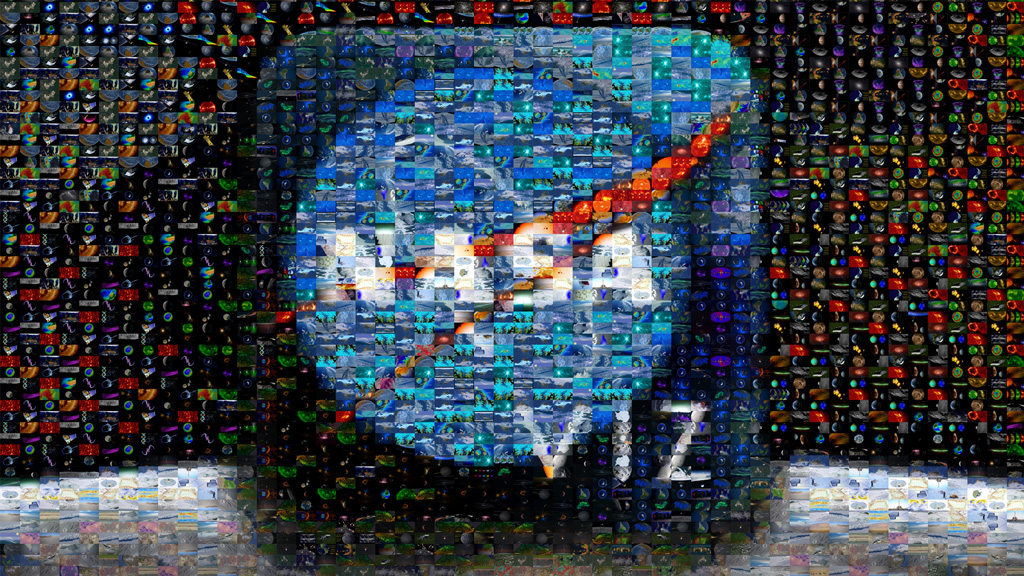Galactic Lobes
Scientists have discovered gigantic structures 25,000 light-years tall ballooning above and below the Milky Way. Within each curved lobe, extremely energetic electrons of unknown origin interact with lower-energy light to generate the gamma rays that define these bubbles. The galactic-scale structures could be remnants from a burst of star formation or leftovers from an eruption by the supermassive black hole at our galaxy's center. Scientists aren't sure yet, but the more they learn about this amazing structure, which may be only a few million years old, the better we'll understand the Milky Way. While not immediately visible to NASA's Fermi Gamma-ray Space Telescope, these unexpected features were brought into sharp relief by a group of scientists who processed data from Fermi's all-sky map. The visualization below shows how artists imagine the lobes would appear if gamma rays were visible to the naked eye.

Gamma rays radiate from the Milky Way's center, but where do they come from?
An artist's impression shows the gamma ray lobes towering above and below the Milky Way's spiral arms.
Scientists used Fermi satellite data to identify the existence and shape of these never-before-seen features.

The structure's sharp edges suggest it formed in a sudden, impulsive event.

From end to end, the lobes stretch 50,000 light years, or about half the diameter of the Milky Way.
For More Information
See NASA.gov
Credits
Please give credit for this item to:
NASA's Goddard Space Flight Center
Image of Fermi all-sky map, with bubbles outlined courtesy of NASA/GSFC/DOE/Fermi LAT/D.Finkbeiner et al.
-
Producer
- Scott Wiessinger (USRA)
-
Writers
- Scott Wiessinger (USRA)
- Francis Reddy (SPSYS)
Release date
This page was originally published on Thursday, March 1, 2012.
This page was last updated on Wednesday, May 3, 2023 at 1:53 PM EDT.
